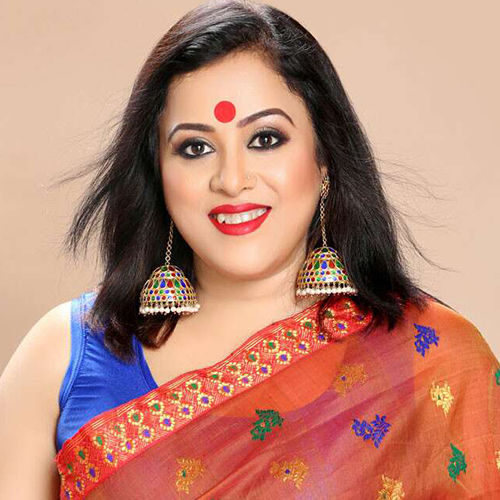
Sanjukta Dutta
Fashion Designer
Sanjukta's Studio
Every mekhela chador is unique, customised and handcrafted by specialised artisans
Sanjukta Dutta creates unique garments by clubbing prints of different places, with the Assamese silk mekhela chador as the base in most cases. In an exclusive interview with Fibre2Fashion, she tells us about her beautiful pieces and her efforts to redress problems of weavers.
Fibre2Fashion: Tell us about your collection at Lakme Fashion Week 2017.
Sanjukta Dutta:
F2F: You usually incorporate traditional designs of different parts of the country to the mekhela chador. What is the inspiration for your latest collection? Which Assamese motifs have you used and what is their significance?
SD:
F2F: What has the response been for this collection?
SD:
The response to my recent collection showcased at Lakme Fashion Week 2017 was excellent, especially for the mekhela worn by Preity Zinta.
F2F: How do you market your creations?
SD:
My Guwahati store displays my latest collection. However, marketing on social media has helped me reach out to the maximum customers. On an average, approximately 500 sets of mekhela chador are sold every month. Prices vary from Rs 10,000 to Rs 80,000.
F2F: How is weaving a mekhela chador different from weaving other traditional Indian outfits?
SD:
My collection offers a wide range of silk mekhela chador with different varieties of coloured silk thread. Every mekhela chador is unique, customised and hand-crafted by a select bunch of specialised mekhela chador artisans whose craft almost went extinct. The materials are locally produced from a particular type of silkworm found only in one village in Assam. Each piece goes through a rigorous 45-day production cycle before it can tell the story that the beautiful woman draping it, wants it to.
F2F: What is the market for mekhela chador outside Assam?
SD:
F2F: Where do you source your fabric?
SD:
All the material is procured from Assam. I only design in silk. I work with pat or mulberry silk, muga, a beautiful golden silk indigenous to Assam and tussar, which has a rich beige-gold colour and lovely texture. Metal yarn, used for motifs and borders, gives a rich look.
F2F: What is the size of your weaving unit? How many weavers do you work with?
SD:
F2F: What are the issues that your weavers face? As a designer, what are you doing to redress their problems?
SD:
In 2012, I made a humble start with three looms. Today, I work with more than 100. The journey has not been smooth. As in other parts of the country and in other art forms, the weavers, who are the true artisans, also began to fall prey to the machinations of demand and supply. Cost advantage of China drew a large portion of the muga industry out of Assam. Better financial opportunities in other areas slowly drew artisans away. So, one factor I had to battle with while trying to revive this industry was to get these artisans back. Today, I support over a hundred families of artisans, covering aspects like education, medical costs, lodging and boarding, besides competitive salaries. The benefits are showing. Even after giving them these facilities, we are making healthy profits which we re-invest to get more artisans back.
Aseem Prakash
Abhay Gupta
Fanny Vermandel
Rahul Mehta
Rahul Mehta
Pradip Mehta
Gabi Seligsohn
Bill D’Arienzo
Arun Sirdeshmukh
Anurag Batra


20230103183907.png)




_8.JPG)





